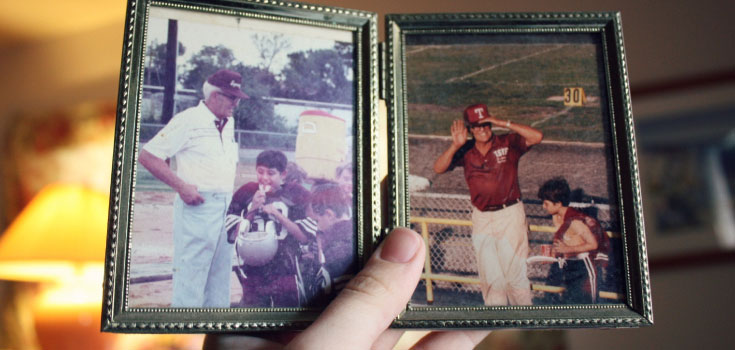How many times have you ventured into the attic or basement with the firm resolve to declutter years of belongings—everything from well-used toys to discarded furniture to piles and piles of paper? You certainly do not want to inflict on your children the irksome task of cleaning up after you.
Why do the best decluttering intentions often deflate halfway through the first box?
The Use It Up, Wear It Out, Make Do, or Do Without Mindset
Those of us who were raised by children of the depression will always feel the burden of the privileged. Long after it was necessary, they saved rubber bands, bits of string, and safety pins. Towels were used until paper thin. And Meatless Monday had nothing to do with saving the environment.
At the same time, they showered their children with what they never had—music lessons, plenty of presents under the tree, a college education—with the understanding that this bounty was hard-earned.
To throw away old term papers now seems a refutation of all they sacrificed for us. At the very least, it’s a grand excuse for all those unsorted piles.
The Sum of Stuff Is Greater Than Its Parts Memories
When we struggle with the decision to discard, we are often defeated by an item’s association to a person or time irrevocably gone. And so begins the internal dialogue:
I’m getting rid of that ugly chair. It was tucked away for years in a corner of the living room. Nobody ever sat in it because it was
a. uncomfortable
b. not allowed
c. hidden in the corner
The facts are: your mother regretted buying it, there is no joy in the memory, and your children have no interest in taking it home with them.
The “But It’s Still Good” Excuse
Wooden tennis rackets. Wristwatches. Dial phones. Technology has made obsolete much of what we once valued, and we will never again need much of what we keep. The very presence of the outdated and nonfunctioning drags on our lives. If we don’t discard them today, we face the same decision again down the line.
Regardless of sentiment or condition, if an item doesn’t belong in the Smithsonian, it doesn’t belong in the attic.
Decluttering: Where to Start
Even when possessions become more of a burden than a pleasure, it’s hard to part with them. With expert recommendations for decluttering and downsizing in mind (see reading list below), let’s focus here on “disposal without tears” of useless or marginally useful, but never-more-to-be-used, items:
Printed materials
Discard without guilt science and math textbooks, school edition anthologies, dictionaries, almanacs, atlases, encyclopedia sets, and worn and tired paperbacks (especially of erstwhile best sellers), and magazines. Anything else can go the used book sale folks at your local library. If you cannot resist buying more, live by the rule: for each item you purchase, dispose of five.
Tools
If they are in useful and in good condition, these are garage sale goodies. Alternately, contact the local vocational school or community college to see if they can use them.
Clothes
Think how happy you’ll make the vintage clothes hound when she finds your go-go boots at Goodwill. If it’s clean and without damage, pack it up and send it off. If you happen to be the inveterate clothes hound, again, live by the rule: for each item of clothing you purchase, dispose of five.
Wedding Gowns
The best (and only possible) time that someone would want a wedding dress is immediately after a wedding, when it is still in style. (Think Princess Diana and those puffy sleeves…) Ask younger female relatives if they would like to have it. If not, make a Goodwill shopper happy.
Luggage
Unless you travel everywhere by Phaeton touring car, the most elegant leather luggage has no practical use these days. Those clothes you’re discarding? Pack ‘em in those suitcases for their trip to Goodwill.
Photographs
Save one wonderful photo of deceased friends and family. On the reverse, identify the person, approximate year, and occasion or location. For the rest, pay the most technically savvy youngster in your family to scan, organize, and store “on the cloud”. Rapidly changing technology will always pose challenges to archivists and preservationists, but in good conscience leave that problem to future generations.
Decluttering Resources
Thousands of books have been written about decluttering and downsizing, and whole library shelves are devoted to the subject. (The latter is especially good news to hoarder wannabes because a library card is probably the most effective way to avoid collecting even more books.)
Here is a recommended reading list:
Behind the Clutter: Truth. Love. Meaning. Purpose by June Saruwatari explores our relationship to our things, why we keep what we do, and how to begin the process of letting go.
Also focused on our internal baggage is Making Peace with the Things in Your Life: Why Your Papers, Books, Clothes, and Other Possessions Keep Overwhelming You and What to Do About It by Cindy Glovinsky.
The Life-Changing Magic of Tidying Up: the Japanese Art of Decluttering and Organizing by Marie Kondo recommends tackling clutter category by category, starting with clothes, rather than attic, closet, basement, etc. Her advice regarding items whose discard induces anxiety? Thank them politely for what they brought to your life and give them away.
Downsizing the Family Home: What to Save, What to Let Go by Marni Jameson is an especially thoughtful guide for children who must manage the accumulated possessions of aging or deceased parents. The author’s journey is personal, but the lessons learned are more widely useful.
If checklists work best for you, Moving for Seniors: A Step-by-Step Workbook by Barbara H. Morris offers practical, no-nonsense advice in an accessible format.
Defeat is incremental, but so is victory. Now is the time to tackle clutter, the detritus of family life.
